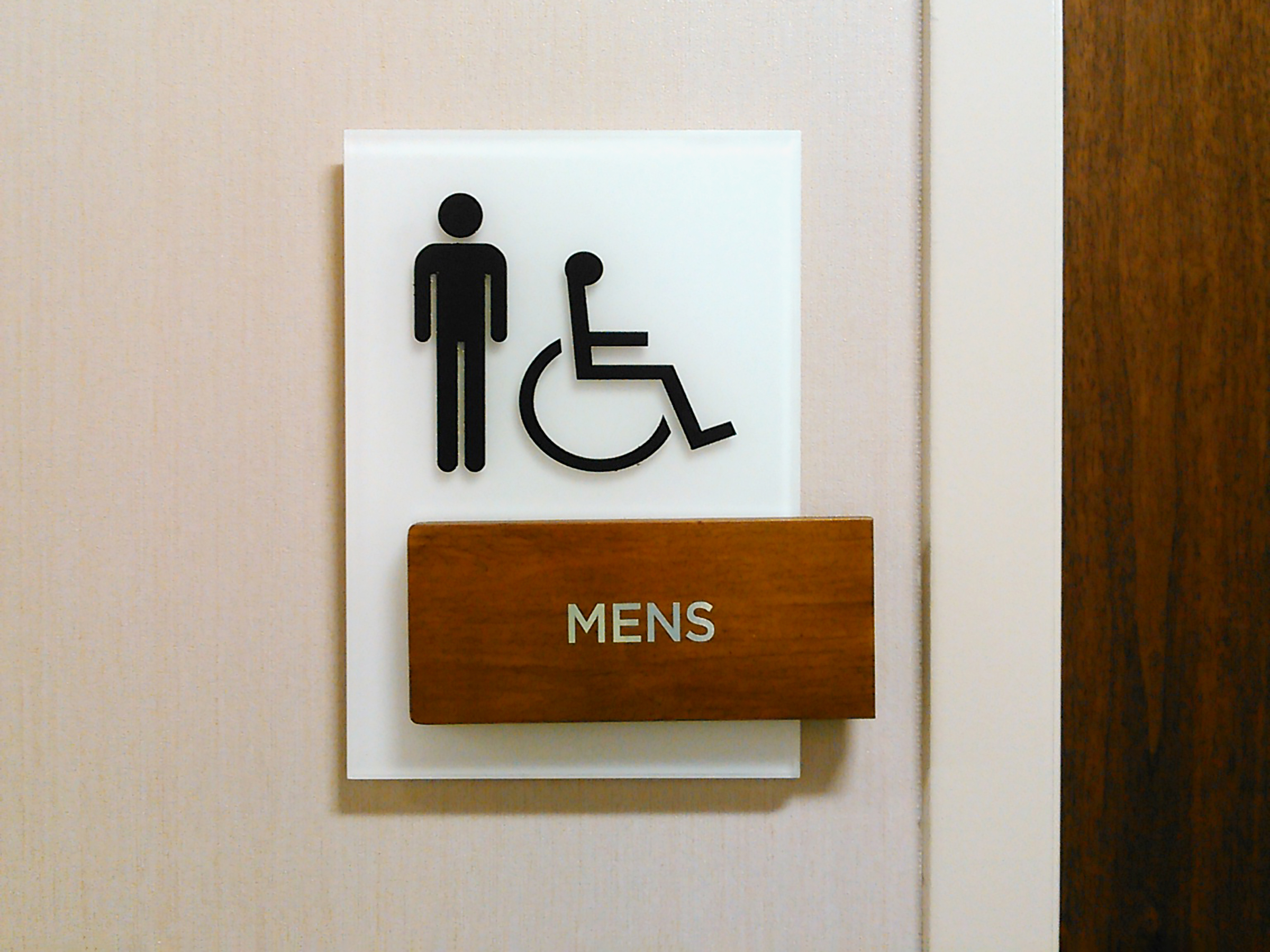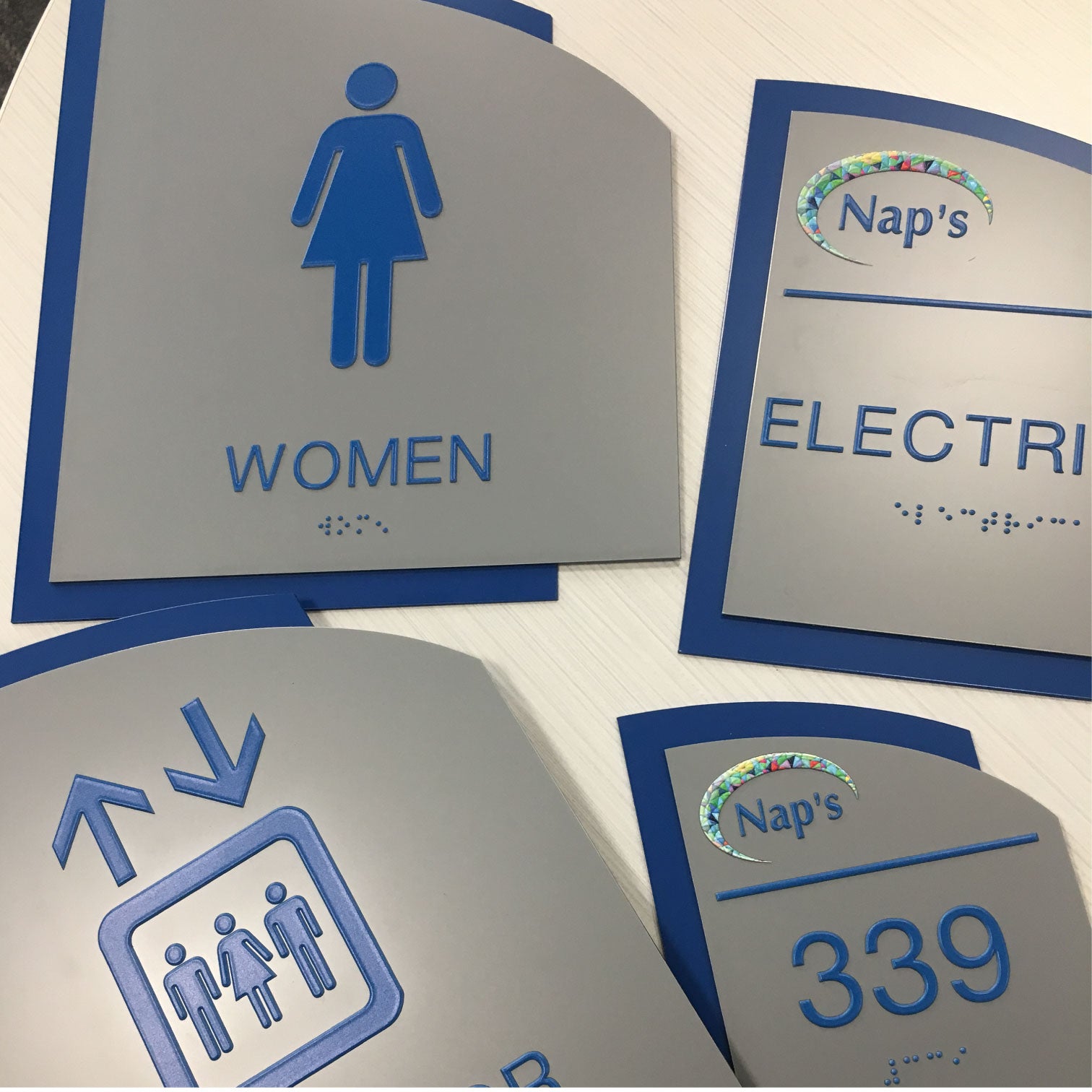ADA Signs: Crucial Tools for Inclusive Atmospheres
ADA Signs: Crucial Tools for Inclusive Atmospheres
Blog Article
Checking Out the Trick Features of ADA Indications for Boosted Access
In the world of accessibility, ADA indications offer as silent yet powerful allies, making certain that areas are inclusive and accessible for people with handicaps. By incorporating Braille and tactile aspects, these signs break barriers for the visually damaged, while high-contrast shade schemes and legible fonts provide to varied aesthetic needs.
Value of ADA Conformity
Guaranteeing conformity with the Americans with Disabilities Act (ADA) is important for cultivating inclusivity and equivalent access in public areas and offices. The ADA, established in 1990, mandates that all public facilities, companies, and transportation services fit people with handicaps, ensuring they appreciate the very same rights and chances as others. Compliance with ADA requirements not just meets lawful commitments but also improves an organization's online reputation by showing its dedication to variety and inclusivity.
One of the crucial elements of ADA compliance is the application of available signage. ADA indications are made to ensure that individuals with specials needs can easily navigate through areas and structures.
In addition, sticking to ADA guidelines can reduce the threat of lawful effects and prospective fines. Organizations that fail to comply with ADA standards may encounter fines or claims, which can be both destructive and economically difficult to their public photo. Thus, ADA conformity is integral to cultivating an equitable setting for everyone.
Braille and Tactile Elements
The incorporation of Braille and responsive elements into ADA signs personifies the concepts of availability and inclusivity. These features are crucial for people that are blind or visually impaired, enabling them to navigate public spaces with greater independence and confidence. Braille, a responsive writing system, is essential in offering composed information in a style that can be quickly regarded through touch. It is usually put underneath the equivalent message on signage to make sure that people can access the details without aesthetic support.
Tactile elements expand beyond Braille and consist of elevated symbols and characters. These elements are created to be discernible by touch, allowing individuals to determine area numbers, washrooms, exits, and other crucial locations. The ADA establishes particular standards relating to the dimension, spacing, and positioning of these tactile components to maximize readability and make sure uniformity across different settings.

High-Contrast Color Design
High-contrast color pattern play a critical function in improving the visibility and readability of ADA signage for people with aesthetic impairments. These plans are crucial as they make the most of the difference in light reflectance in between text and history, making sure that indications are easily noticeable, even from a range. The Americans with Disabilities Act (ADA) mandates using details shade contrasts to accommodate those with limited vision, making it a crucial aspect of compliance.
The effectiveness of high-contrast shades hinges on their ability to stand apart in different lights problems, consisting of poorly lit environments and areas with glow. Generally, dark text on a light history or light message on a dark history is utilized to accomplish optimal comparison. Black text on a yellow or white history supplies a stark aesthetic distinction that helps in quick recognition and comprehension.

Legible Fonts and Text Size
When considering the layout of ADA signage, the choice of clear fonts and proper text dimension can not be overemphasized. The Americans with Disabilities Act (ADA) mandates that fonts must be sans-serif and not italic, oblique, manuscript, extremely attractive, or of unusual form.
According to ADA guidelines, the minimal message height need click for more to be 5/8 inch, and it must enhance proportionally with watching distance. Consistency in message dimension adds to a cohesive visual experience, helping people in navigating settings efficiently.
Furthermore, spacing in between letters and lines is important to readability. Adequate spacing stops personalities from appearing crowded, boosting readability. By adhering to these requirements, designers can substantially improve access, making certain that signage serves its intended purpose for all people, no matter their visual abilities.
Effective Positioning Strategies
Strategic positioning of ADA signage is essential for optimizing accessibility and guaranteeing conformity with legal standards. ADA standards state that signs should be placed at an elevation in between 48 to 60 inches from the ground to guarantee they are within the line of sight for both standing and seated individuals.
In addition, indications must be put adjacent to the lock side of doors to allow very easy identification before entrance. Uniformity in indicator placement throughout a facility enhances predictability, look what i found reducing complication and improving general user experience.

Final Thought
ADA indications play an important function find this in promoting access by incorporating attributes that attend to the requirements of individuals with disabilities. These components collectively cultivate an inclusive setting, underscoring the relevance of ADA compliance in making sure equal access for all.
In the realm of accessibility, ADA indicators offer as silent yet powerful allies, making certain that rooms are accessible and inclusive for individuals with disabilities. The ADA, established in 1990, mandates that all public centers, employers, and transportation solutions fit individuals with disabilities, guaranteeing they enjoy the very same legal rights and opportunities as others. ADA Signs. ADA indications are created to guarantee that people with handicaps can easily navigate via buildings and areas. ADA guidelines specify that signs ought to be placed at an elevation between 48 to 60 inches from the ground to ensure they are within the line of view for both standing and seated individuals.ADA signs play a vital duty in promoting access by integrating features that attend to the needs of people with disabilities
Report this page